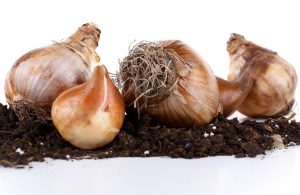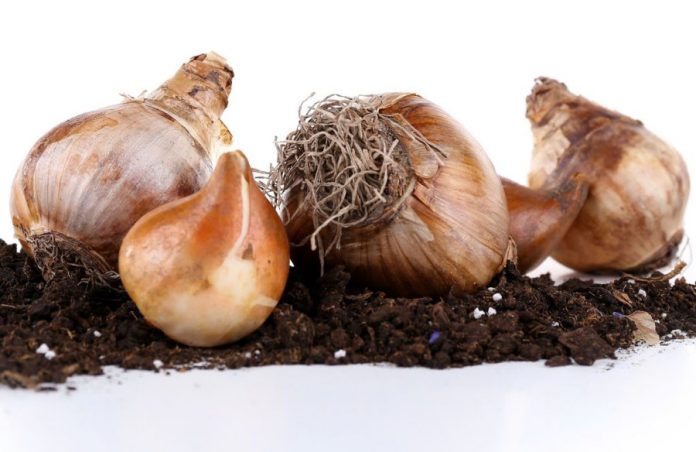 Now is the time gardeners begin digging up perennials, breaking the underground clumps apart, then spreading the baby plants to new spots in the garden. Many subterranean plant clumps are fancy parts known as bulbs, crowns, corms, rhizomes and tuberous stems.
Now is the time gardeners begin digging up perennials, breaking the underground clumps apart, then spreading the baby plants to new spots in the garden. Many subterranean plant clumps are fancy parts known as bulbs, crowns, corms, rhizomes and tuberous stems.
The best known—and, arguably tastiest, bulb– is the common onion. It has an odd, compact disc-like stem called a “plate” that gives rise to tightly-packed buds surrounded by thick leaves, sometimes called its scales. The leaves and flowers emerge from the pointy “top” side of the stem and the tangled roots emerge from its flattish “bottom.”
A gardener can cut-up an onion bulb and, as long as each section contains a substantial piece of the “plate,” a new plant generally will grow when conditions are right. Other bulb perennials include tulip, daffodil and that Christmas-time favorite, the amaryllis.
In order to bloom, many bulbs, particularly tulips, require a specific number of chilling hours during their annual dormant period. Southern gardeners dig them up, shake off the soil, and store them in the frige for several months before spring planting time.
Many daffodils love Texas soils and weather. They came with the pioneers, multiplied with zest, and still put on spring shows all over the state. The wonderfully scented, little white and yellow jonquillas grow wild at my place in east Texas.
My neighbor across the street in Lantana grew red spider lily bulbs from her grandmother’s garden. Those beauties are a dazzling variety of amaryllis that bloom in the fall; no leaves, just a stem topped by 5 small, but breath-taking, blooms. If you can’t get a bulb from a relative, plan to spend a pretty penny per bulb from internet nurseries.
And don’t forget that huge Asiatic crinum; a white spider lily from hardy single bulbs that will fill a man’s hand. Some people call them Peruvian Spider Lilies. They’re a piece of work to dig, then fork apart, but oh boy, what a spring show they put on in the garden. I cut back the long leaves to about eight-inches for transplanting.
Many plant vendors sell stubby fat gladiola and crocus “bulbs” by the sack, but these baby structures are correctly called corms. They look like bulbs, but instead of juicy leaves around the stem, the corm’s scales are dry. Leaves and flowers emerge from the top and roots from the bottom.
Wonder where irises and cannas fit into this scheme of baby plant types? Those “bulbs” are actually rhizomes or special horizontal stems. They like to be near the surface of the ground and lack of rain doesn’t bother them.
The reason Bermuda grass pokes an unwanted head up in the garden is because its rhizome stems can dive deep then sneak around underground. Pulling the leaves won’t get rid of it, but a spade and a systemic herbicide will. If you have this grass in the vicinity of any flower or vegetable bed it will be a perpetual control issue.
Cyclamens in bloom brighten up stores every winter. These beautiful red, white and pink flowers with white-veined, forest green, round leaves, have a flattish round “bulb,” that is really a tuberous stem. The upper-side of a cyclamen it called its crown. That’s where the plant we swoon over comes from; the roots are at the bottom of the tuberous stem.
Irish potatoes are actually tuberous stems. Those little eyes are stem nodes that contain bud clusters. A plant tuber is a thick or swollen part. Sweet potatoes, on the other hand, are root tubers, because they do not have nodes with bud clusters.













 GIF.gif)



